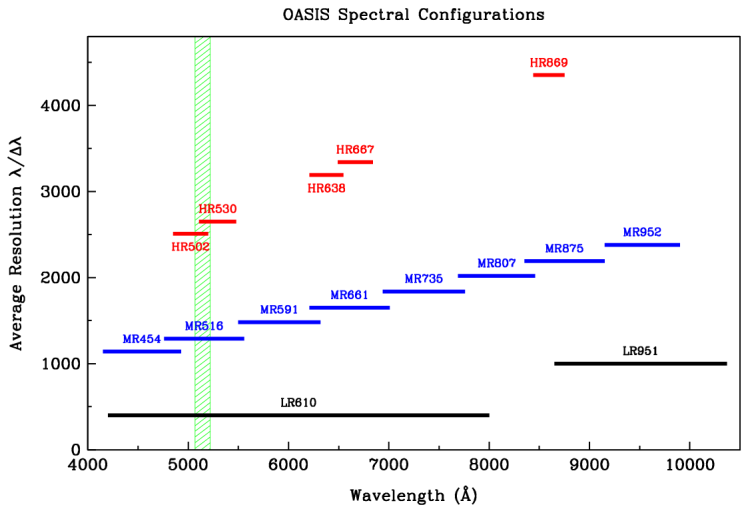GLAS Notch Filter
When OASIS is used in conjunction with GLAS (the laser guide star AO
system), a special 'notch' filter is inserted into the light path. This
filter
selectively reflects light at ~5145Å (the wavelength of the
laser) towards
the wavefront sensor, while transmitting the remainder of the light
towards the science arm.
The key characteristics of the notch filter are:
- The filter is centred at 5145 Å, where the transmission to
the
science arm is ~ 1 x 10-5.
- At ±75 Å from this central wavelength, the
transmission is ~80%. (This is the
range illustrated in the following figure.)
- At wavelengths outside the notch (4000 Å - 2.5 μm),
the transmission is ~92%.
The following figure illustrates the wavelength range (green shaded
region) where the
transmission of the filter is below ~80% . Four
spectral configurations are affected (HR502, HR530, MR516 and
LR610).

